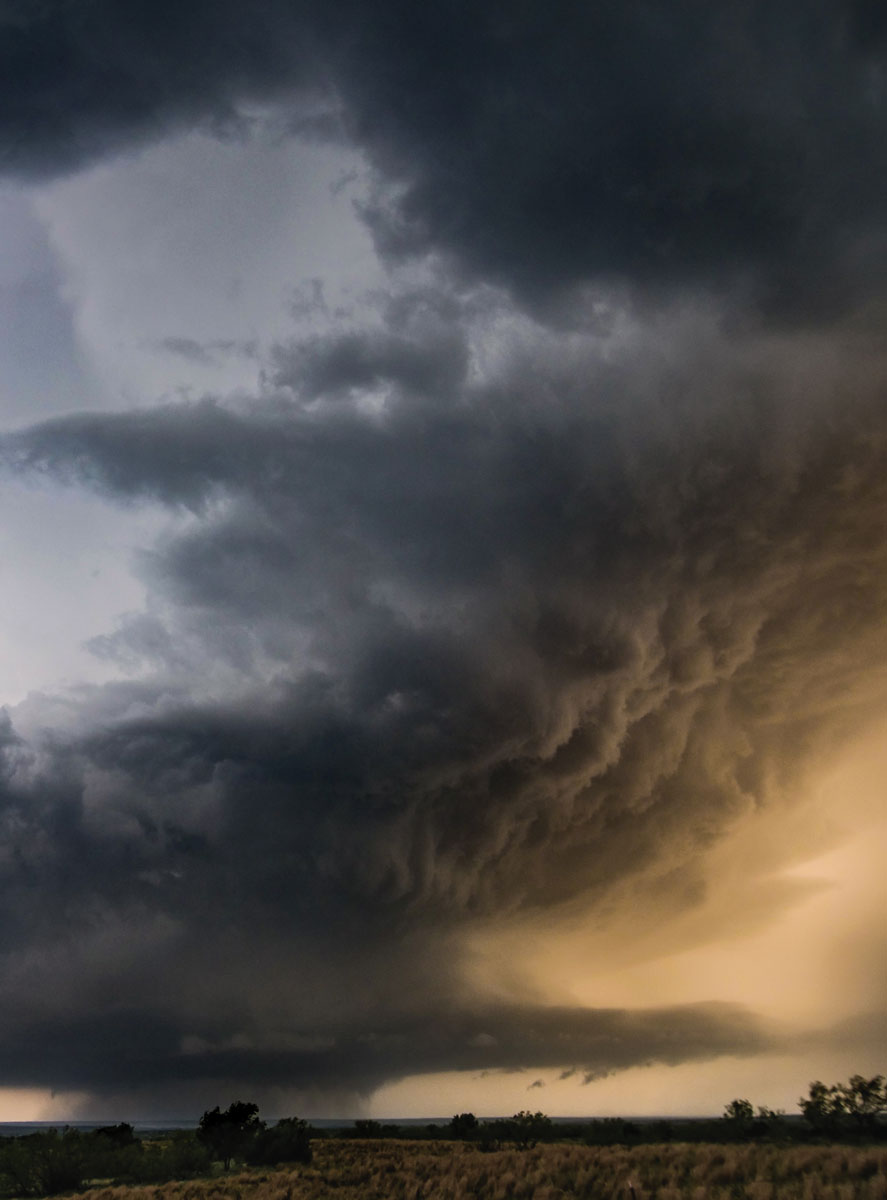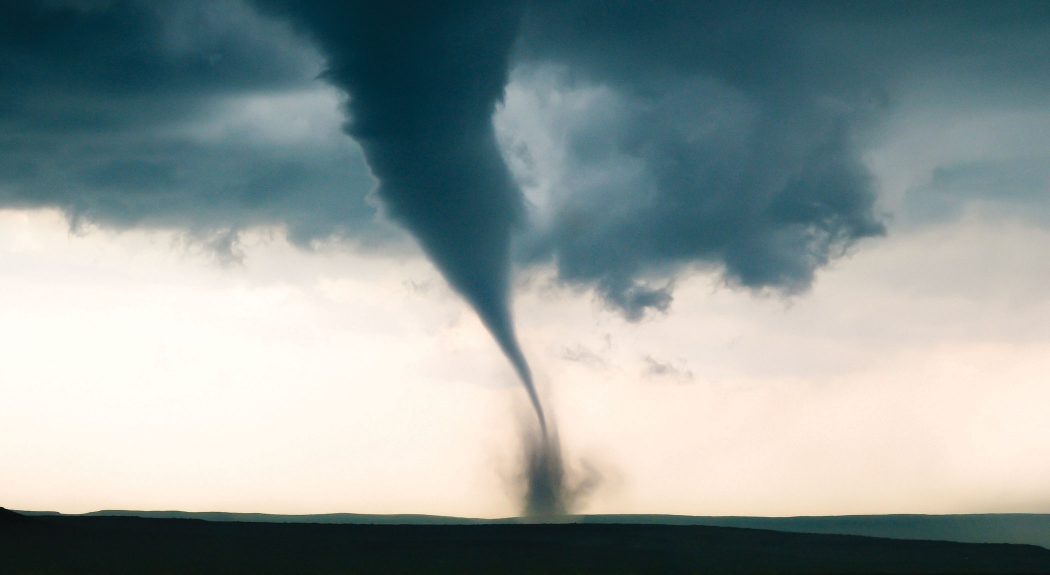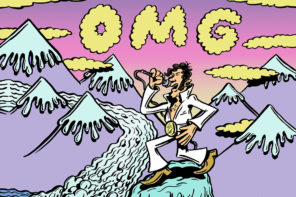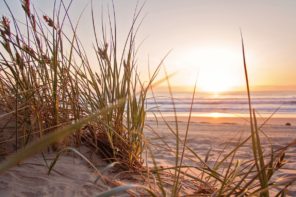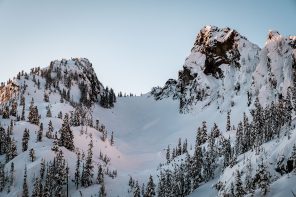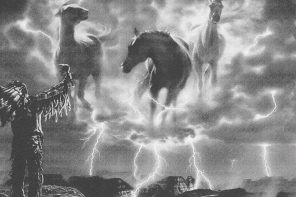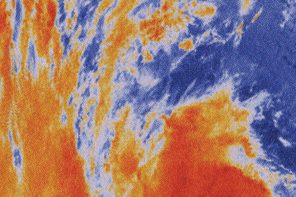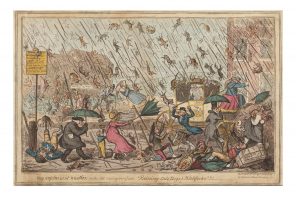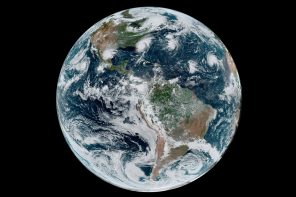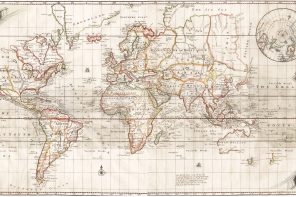Talking climate and weather with real-life storm chaser and NOAA and NCAR scientist Chris Rozoff
In The Eye of the Storm
By Jonnah Perkins
Photos by Tornado Trackers
People have been hooked on dramatic weather since before Zeus first lifted the thunderbolt. Holding the power of predicting these marvelous and terrifying displays of nature has been a preoccupation from the dawn of mankind. So, what does a modern meteorologist with a PhD in atmospheric sciences and meteorology do with the millennia of wisdom, science, and folklore? Memorize lines from Twister.
Obviously, that’s not the only thing he does with it, but an early fascination with superstorms led Chris Rozoff, PhD, Project Scientist at the National Center for Atmospheric Research, to a career in work that seeks to develop solutions to the predicting and handling the severe weather events that not only take lives but cause economic devastation around the world. And even to answer some of the more frightening questions about our future on this planet. Just as the farmers, sailors, and intellectuals of the ancient world were mapping the night sky and tracking weather patterns to predict the next cataclysm, modern meteorologists are using computer science to tell us more quickly and accurately when the next weather event, or weather pattern, will pull us back into the grips of Mother Nature herself, whether that means a swell worthy of getting on a plane to Mavericks or a storm that will pound a coast. While Chris can’t tell us that everything is going to be okay, he can say that through data modeling there is hope for the future if we can do it together.
Apocalyptic scenarios, chasing tornadoes, trail running and the best places to live on a warming planet all came up when environmental writer Jonnah Perkins talked with Chris from his home office in Boulder, Colorado.
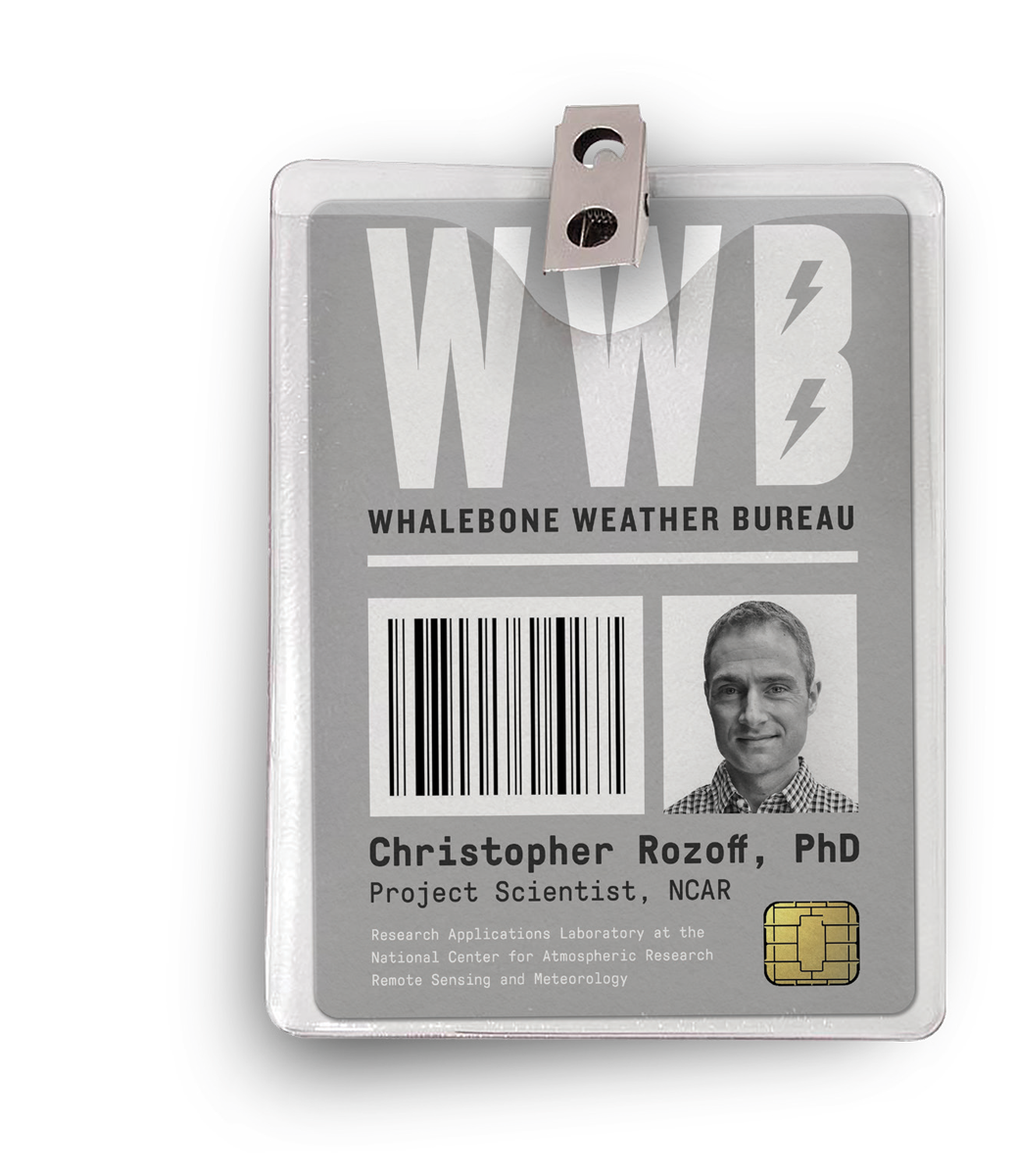
Jonnah: What’s your earliest memory of feeling drawn to the drama of weather?
Chris: I was interested from a pretty young age. I remember when I was seven or eight, having a summer in the Chicago area where we were just inundated by severe storms, week after week. I just remember being fearful but intrigued at the same time. Severe weather definitely got me into it. In the Chicago area in the early ’90s, we had an F5 tornado that hit this town called Plainfield. I watched the storm from start to finish pretty much coming down from the North, which is a weird direction for storms and had never seen anything so massive in my life in terms of the vertical extent. And unfortunately, there were a lot of casualties, but I just remember being so impacted by that and from there I was really hooked.
Jonnah: Tracking extreme weather, you’ve had some pretty gnarly experiences with storm chasing. How did you get into storm chasing?
Chris: As soon as I got into severe weather, I was just fascinated by severe storms. In the ’80s, storm chasing started as small scientific pursuits with small groups. Even before Twister, there were a lot of storm chasers. Then when I was in college Twister came out and everyone’s passion for storm chasing exploded. By the time I started going out in the field to do it myself, it was starting to get pretty crowded out there. But it’s something I still do out here in the Plains of Colorado or in surrounding states. I just love getting out on the road and making a forecast about where the best storm will be and try to see if the forecast will verify and then put myself in position to observe a lot of cool things in the storm safely. Some people would purposely try to drive into the stuff. But I try to stay ahead of it and enjoy watching the storm system evolve from a small cloud into a giant severe rotating storm that could produce tornadoes.
Jonnah: What’s the scariest storm system that you’ve ever tracked?
Chris: A lot of the scariest moments are probably where I make mistakes and put myself on a dead-end road or in a bad path. I’ve never had any really close calls as far as I know, but my car has some hail dents from me making boneheaded mistakes on which direction I should drive.
But the most fascinating storm I’ve ever experienced was in northeastern South Dakota. I watched the storm develop into one of the most violent atmospheres I’ve ever seen in terms of the parameters. The thing exploded like a nuclear bomb. Within the first hour, it was already dropping this gigantic tornado, and I’ve just never seen a storm so violent in my life. Even being safely away from it, it still felt like a pretty terrifying experience.
Jonnah: Twister is such a classic ’90s film. It’s so fun that it actually inspired storm chasers like yourself.
Chris: I have to admit that I was a little perturbed because it’s so unrealistic and I took it too seriously, but now I watch it. Actually, I can recite the lines from it now just because I view it more as a comedy entertainment piece than a real storm chasing story. After hours on the road of not seeing anything or just having clear skies after driving all the way to Oklahoma, we recite lines from Twister.
Jonnah: You spent almost a decade as a researcher at the University of Wisconsin, Madison. What was the focus of your work during that time in your career?
Chris: That was my first 10 years after grad school. I was working there mostly on hurricane research, which is what I did my PhD in—focused on trying to understand the formation of outer eyewalls and also the intensity changes in tropical cyclones. On top of that, I started to work in a lot of areas to improve forecasting techniques that are used at NOAA’s Hurricane Center. So think satellite data, numerical weather prediction models, and other data sets. And that was rewarding because some of the work that I did then is still being used today at the Hurricane Center. Of course, it is just one small part of the elephant, but it’s fun to be a part of that.
From UW Madison I came to NCAR [National Center for Atmospheric Research] here in Boulder. So since then, I’ve been working on quite a few new areas of research that have branched out from hurricane research, including other forecasting techniques, mountain downslope windstorms and working on downscaling climate models to regional areas.
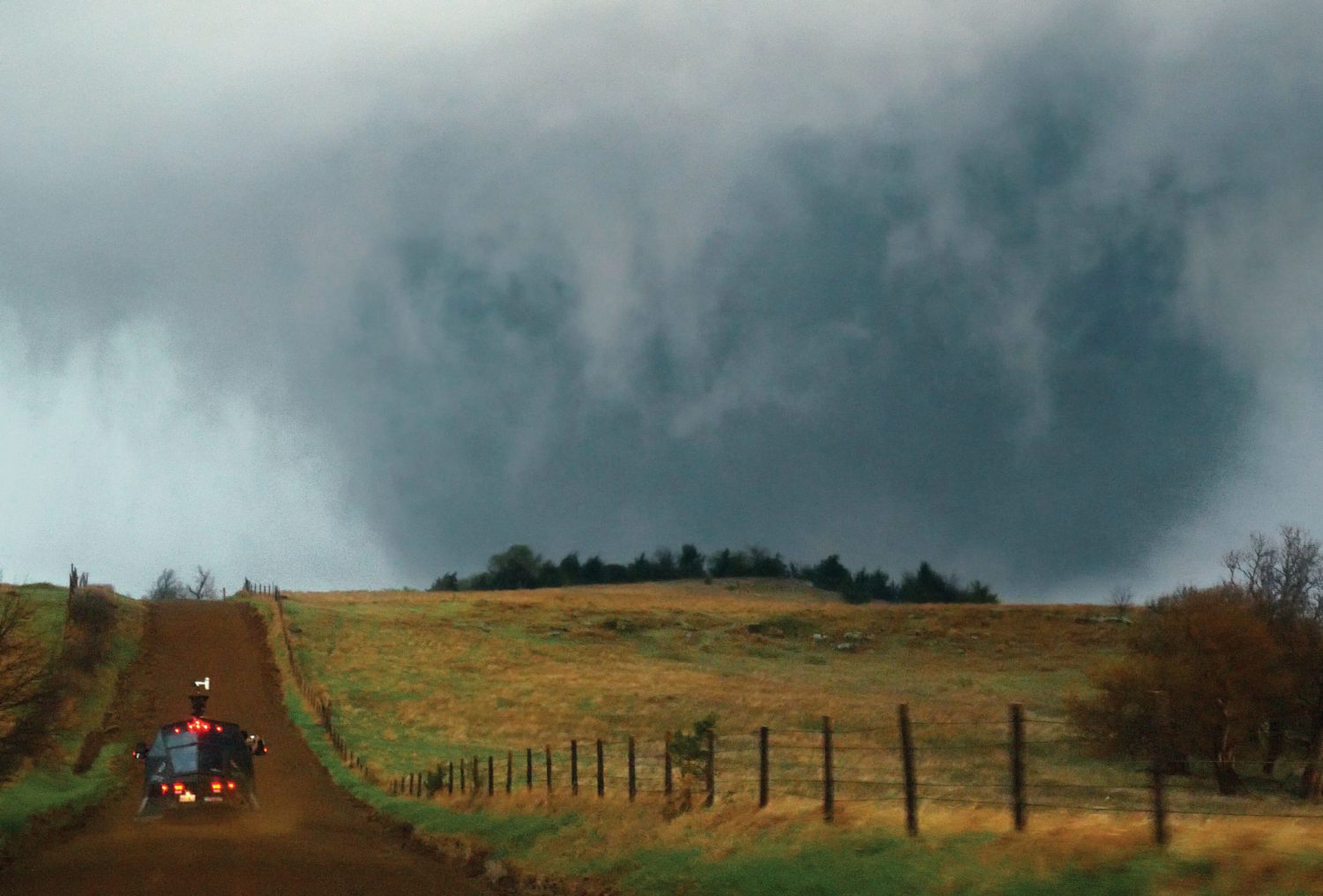
Jonnah: You’re passionate about trail and mountain running. Does your connection with atmospheric sciences influence the pull you feel toward immersing yourself in dramatic landscapes?
Chris: Yeah, definitely. In general, I just love the outdoors, whether it’s the weather or being out in the woods or in a beautiful place just, that’s always been my passion to be outside and enjoy nature. When you’re out on a trail run, you typically don’t want to experience some of the more severe aspects of the weather—there’s a limit to how much I want to experience firsthand. There’s a lot of cool weather with trail running, like mountain waves and just other cool cloud formations, especially out here in the West.
Jonnah: In such a polarized time as this, what are some of the greatest misunderstandings about climate science?
Chris: You said it pretty well, it’s a pretty polarizing topic. The science is pretty clear and there’s a lot of parallels to, I think, COVID although climate science is probably much more advanced in mature science than our understanding of COVID-19. But, yeah, I think the problem with climate science is that it’s dealing with an important issue for society that we know the solution to. But it’s very difficult and requires a lot of sacrifices. For that reason it’s becoming politicized because it requires making hard decisions to impact the current trends—the trends run towards continued global warming with increasing fossil fuel emissions even today. It’s easy to get dark about public opinion and propaganda, and you see a lot of that today. But I think the facts are becoming more clear over time. People across the planet are taking notice and some actions are being taken, whether it’s governments or corporations, the writing’s on the wall. I think we’re seeing positive change.
Jonnah: Can you break down for me the difference between day-to-day weather that we see and overall climate trends?
Chris: That’s a really good question. Weather is just the atmosphere you experience day to day: a snowstorm in the wintertime or a hot day in the summer. The climate is what sets the stage for your weather patterns. Climate is just your basic infrastructure that allows for a certain amount of types of weather patterns to exist in the area that you’re located, and climate can be defined as an average of what has happened over the last 30 years. With climate change, of course, that infrastructure is changing over time, so the types of weather patterns can be similar to the past, but they might be fully changing towards a new set of patterns that allow for more extremes as the climate changes. The weather could be the same, or it could change a lot. The climate is the boundary of what’s possible for a given planet or location.
Jonnah: What do you see as some of the greatest human behaviors impacting climate change?
Chris: Definitely, fossil fuel emissions by far are the largest source of climate change. Carbon dioxide is the primary warming gas and also methane and others like ozone and a few other greenhouse gases, but carbon dioxide by far. The problem with carbon dioxide is that it stays in the atmosphere between 100 to 200 years, and it goes into the ocean as well. Once it’s in the ocean it can stay there on the order of a thousand years. That can bake in climate change for a millennia.
Also, methane is a very potent greenhouse gas, but it typically exits the atmosphere pretty quickly compared to carbon dioxide. The problem with both of those greenhouse gases is that as they build up and trap more heat from the sun’s radiation, the atmosphere can also hold more water vapor. Water vapor itself is a very potent greenhouse gas so that further amplifies global warming, but on top of that, it changes the water cycle. So areas of the planet that are wet tend to get wetter—mostly by producing storms like hurricanes and more traumatic flood events. That’s bad news for the American Southwest and other parts of the world that tend to have drier climates.
We have climate models that we can run from the past, starting in maybe 1900 or 1800, that show us projections of what will happen on our current trajectory. When we run these models, we can see that the data reproduces what’s happening in the atmosphere pretty well in today’s climate. So that gives us confidence that these can be used as good prediction models as well. The good news is if we were to cut emissions dramatically, as has been proposed in various treaties, including the Paris Climate Accord, you can make a significant impact on the amount of warming that will occur.
So the big story is about working towards a future that doesn’t get catastrophically worse. Currently, we have the technology, we just need the political will to implement different emission strategies. The idea that it could get a lot worse is frightening. But we do have the authority within the human race to prevent the future from going down even darker paths.
We’ve given ourselves one of the greatest challenges of human history.
Jonnah: We’re in such an intense time right now. You touched on this a bit but I’ll ask it directly: How do we make sure we aren’t doomed?
Chris: As I was alluding to before, I think there is hope and there is a lot we can do to mitigate further warming. What we’ve given ourselves mostly is not an apocalypse in the sense that everything will be wiped out completely. But we’ve given ourselves obviously one of the greatest challenges of human history.
It’s important to build communities that are more resilient to the changes that are coming and also to take advantage of the areas of the planet that will be more suitable for agriculture. I think where you live in the upper Midwest is going to, probably in the long-term, be a really good place for agriculture because the precipitation should continue to be really good and temperature rises won’t be so catastrophic that it makes life uninhabitable. Areas of the American Southwest might become more challenging because of the lack of water resources.
In addition, we have the wildfire threats that have been getting worse, and those caused a lot of economic damages. So when people argue that we don’t have the money to take on climate change, one has to take into consideration the hundreds of billions of dollars each year we’re spending on climate catastrophes.
Jonnah: Is it just a matter of discipline and sacrifice as a whole human-machine and not just living in the economic moment?
Chris: Yeah, we see green energy-technology evolving. It’s still not quite there yet to replace our current energy infrastructure, but it continues to get cheaper and more profitable. So that’s good news. There is some push to retire nuclear power plants early. I see a lot of climate scientists actually arguing that we should keep those open until we can make green energy more sustainable. Because if we were to shut down the current nuclear plants that assume we would have to become reliant on coal factories or coal power or gas power.
Jonnah: That’s really interesting to balance a look ahead to green energy, but not get out of the nuclear energy space too soon because fossil fuels are obviously the worst option of all.
Chris: They’re obviously cheap and they brought us a lot of good too. I mean, the world we live in today is thanks to a lot of fossil fuels, but unfortunately, nothing comes free. There are always pros and cons to everything.
